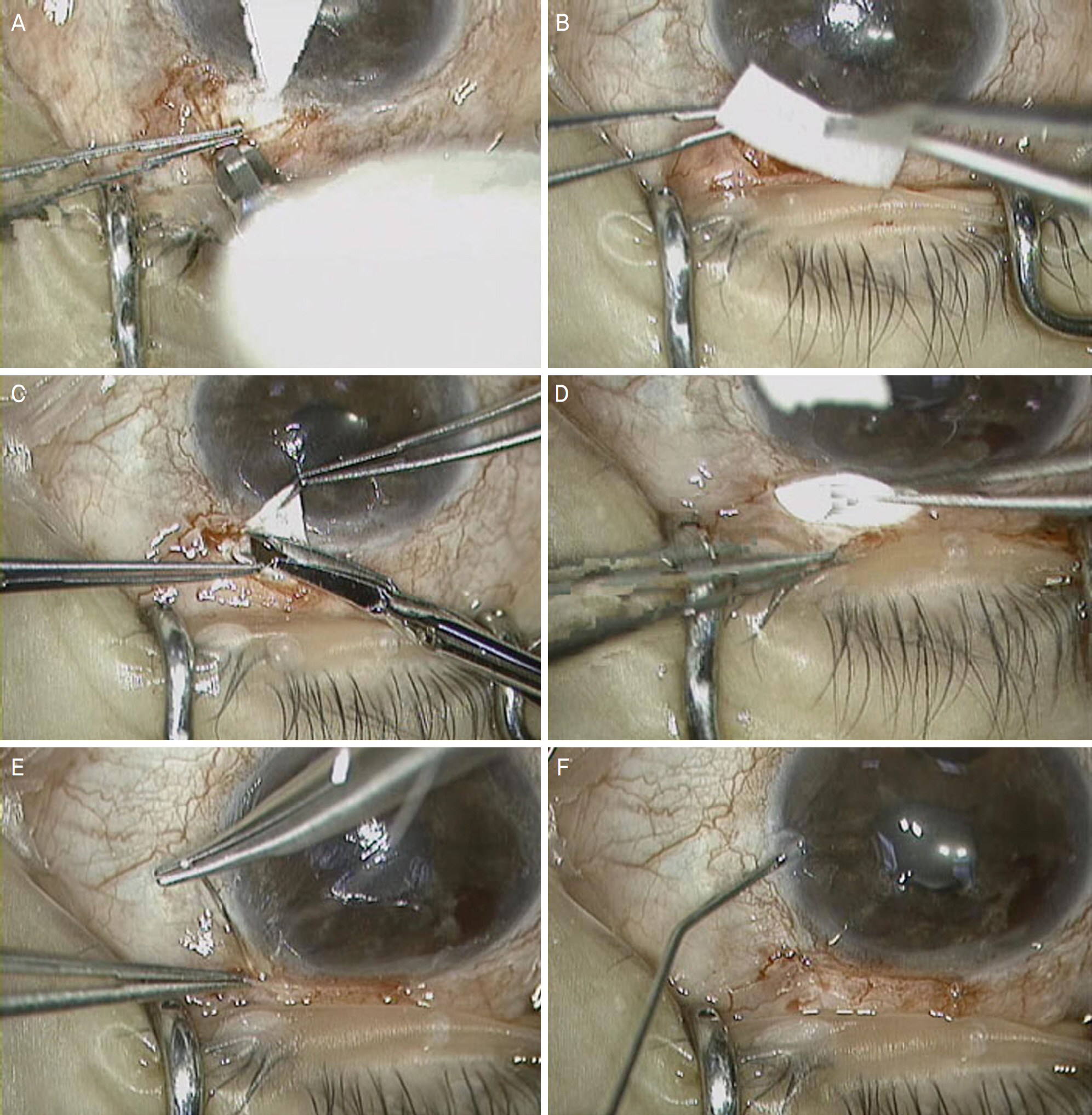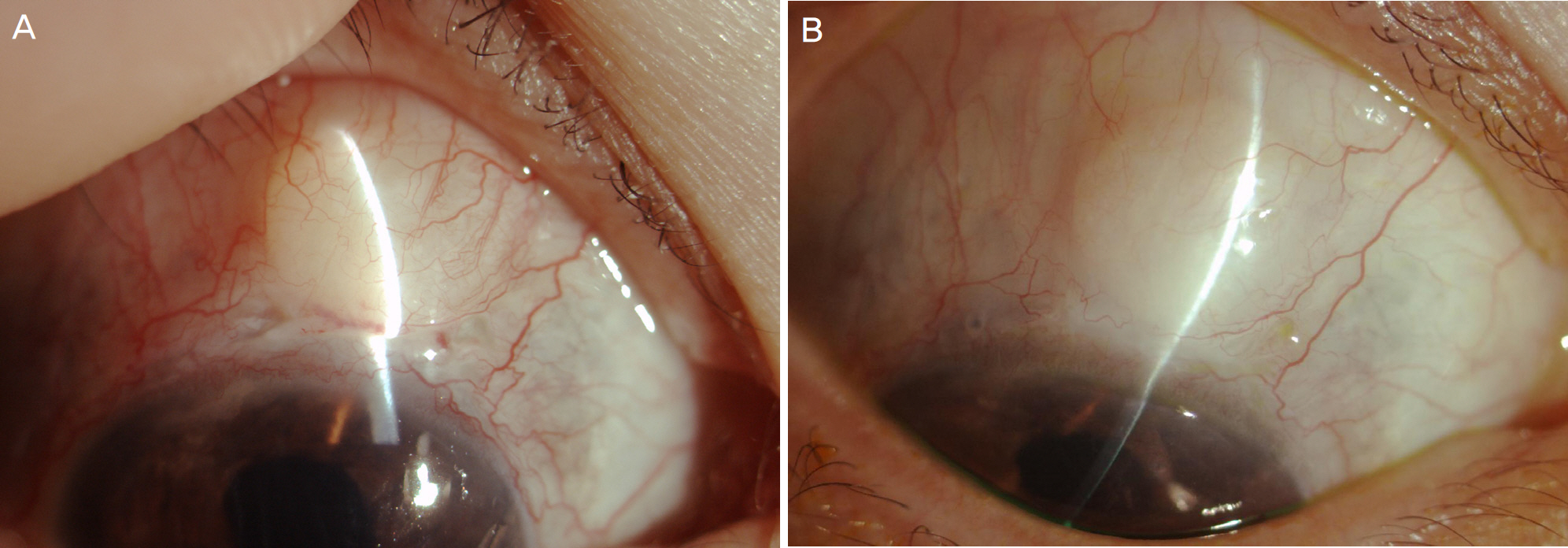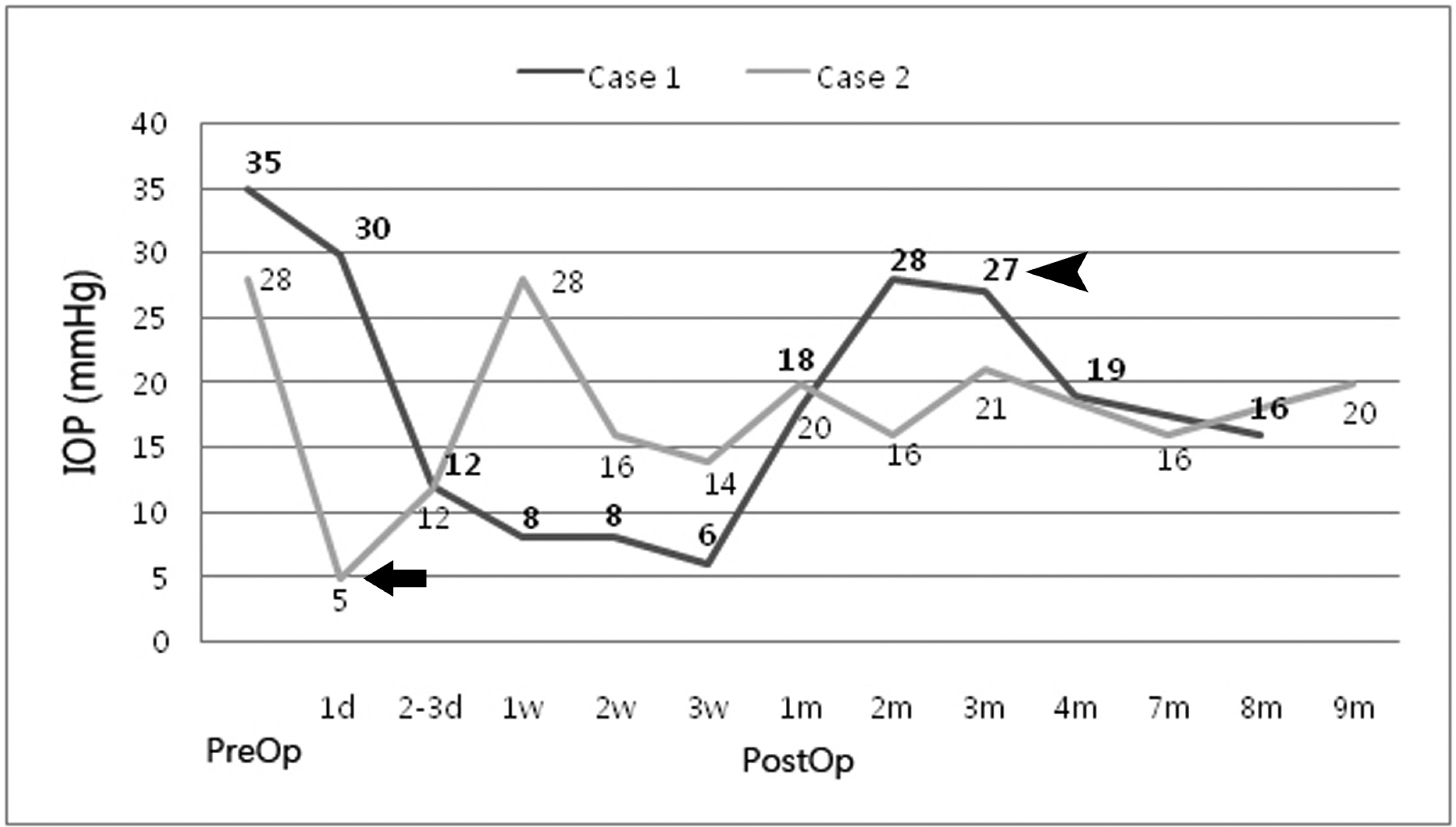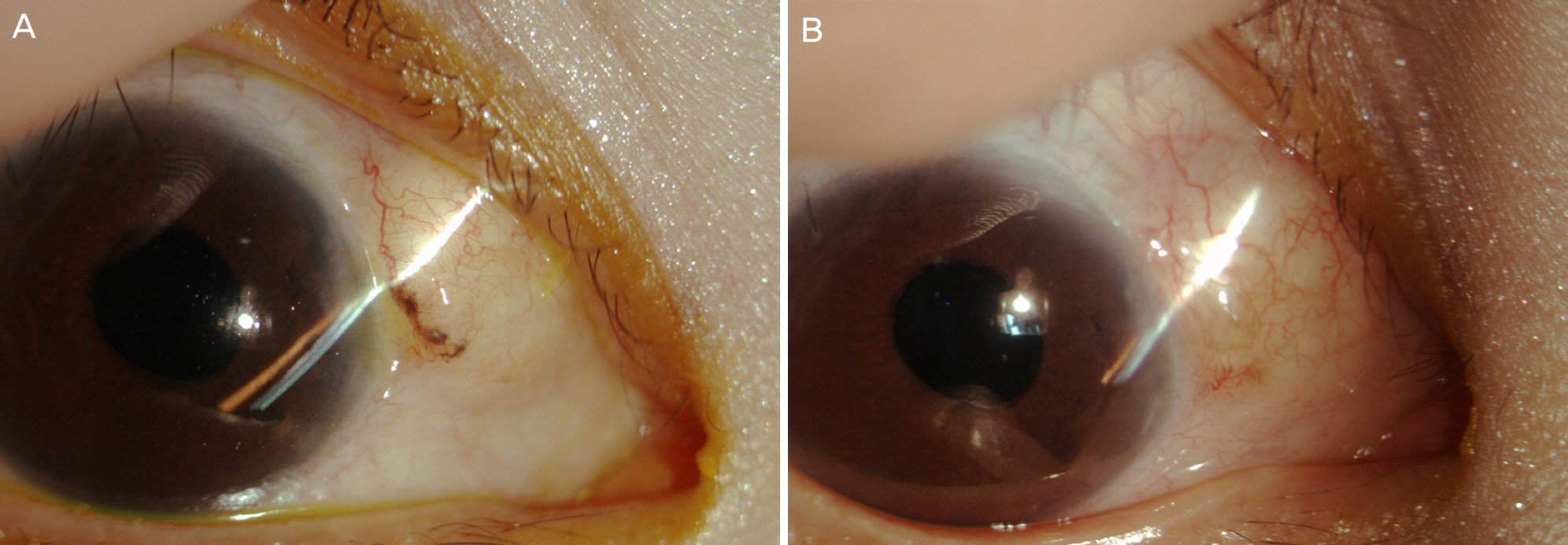J Korean Ophthalmol Soc.
2010 Jun;51(6):912-918. 10.3341/jkos.2010.51.6.912.
Trabeculectomy With Biodegradable Collagen Material: A Report of Two Cases
- Affiliations
-
- 1HanGil Eye Hospital, Incheon, Korea. oijee@hanmail.net
- KMID: 2213631
- DOI: http://doi.org/10.3341/jkos.2010.51.6.912
Abstract
- PURPOSE
To report two cases of trabeculectomy with biodegradable collagen material conducted on two post-vitrectomy patients.
CASE SUMMARY
The first patient was a 43-year-old woman with uncontrolled increased intraocular pressure (IOP) after pars plana vitrectomy with scleral buckling for diabetic retinopathy and vitreous hemorrhage. Another patient, a 28-year-old woman with aphakia, also had uncontrolled increased IOP after pars plana vitrectomy with encircling scleral buckling for retinal detachment. For both of these patients, we performed trabeculectomy using mitomycin C and recently developed biodegradable collagen matrix. In the first case, the IOP was increased three months after the surgery, for which needling was done. After needling, the IOP was well controlled in the range of 16 to 19 mmHg up to eight months postoperatively with stilling anti-glaucomatous eyedrops (Cosopt(R), Xalatan(R)). In the second case, IOPwas increased one week after the surgery, but it was well controlled between 14 to 21 mmHg up to nine months postoperatively with anti-glaucomatous eye drops (Combigan(R)).
CONCLUSIONS
Biodegradable collagen matrix can possibly reduce the surgical failure of trabeculectomy and it is especially suitable for high risk patients when combined with anti-metabolic agents like MMC.
Keyword
MeSH Terms
Figure
Cited by 1 articles
-
Comparison of Effects and Complications between Conventional Trabeculectomy and Trabeculectomy with a Collagen Matrix Insertion
Kee Sup Park, Kyoung Nam Kim, Sung Bok Lee, Jung Yeul Kim, Chang-sik Kim
J Korean Ophthalmol Soc. 2018;59(1):50-59. doi: 10.3341/jkos.2018.59.1.50.
Reference
-
References
1. Teng CC, Chi HH, Katzin HM. Histology and mechanism of filtering operations. Am J Ophthalmol. 1959; 47:16–33.
Article2. Addicks EM, Quigley HA, Green WR, Robin AL. Histologic characteristics of filtering blebs in glaucomatous eyes. Arch Ophthalmol. 1983; 101:795–8.
Article3. Kitazawa Y, Kawase K, Matsuhita H, Minobe M. Trabeculectomy with Mitomycin. Arch Ophthalmol. 1991; 109:1693–8.
Article4. Skuta GL, Beeson CC, Hlgginbotham EJ, et al. Intraoperative mitomycin versus postoperative 5-fluorouracil in high risk glaucoma filtering surgery. Ophthalmology. 1992; 99:438–4.5. Cairns JE. Trabeculectomy-preliminary report of a new method. Am J Ophthalmol. 1968; 66:673–9.6. Chen HS, Ritch R, Krupin T, Hsu WC. Control of filtering bleb structure through tissue bioengineering: An animal model. Invest Ophthalmol Vis Sci. 2006; 47:5310–4.
Article7. Dietlein TS, Jordan J, Lueke C, Krieglstein GK. Modern concepts in antiglaucomatous implant surgery. Graefes Arch Clin Exp Ophthalmol. 2008; 246:1653–64.
Article8. Aptel F, Dumas S, Denis P. Ultrasound biomicroscopy and optical coherence tomography imaging of filtering blebs after deep sclerectomy with new collagen implant. Eur J Ophthalmol. 2009; 19:223–30.
Article
- Full Text Links
- Actions
-
Cited
- CITED
-
- Close
- Share
- Similar articles
-
- Fibrous Encapsulation of Biodegradable Collagen Matrix After Trabeculectomy: A Case Report
- The Analysis of the Clinical Findings and Effects of Biodegradable Collagen Matrix in Trabeculectomy
- Biodegradable Stent/Tube for Pancreatic and Biliary Disease
- Comparison of Effects and Complications between Conventional Trabeculectomy and Trabeculectomy with a Collagen Matrix Insertion
- A Clinical Evaluations of Trabeculectomy








